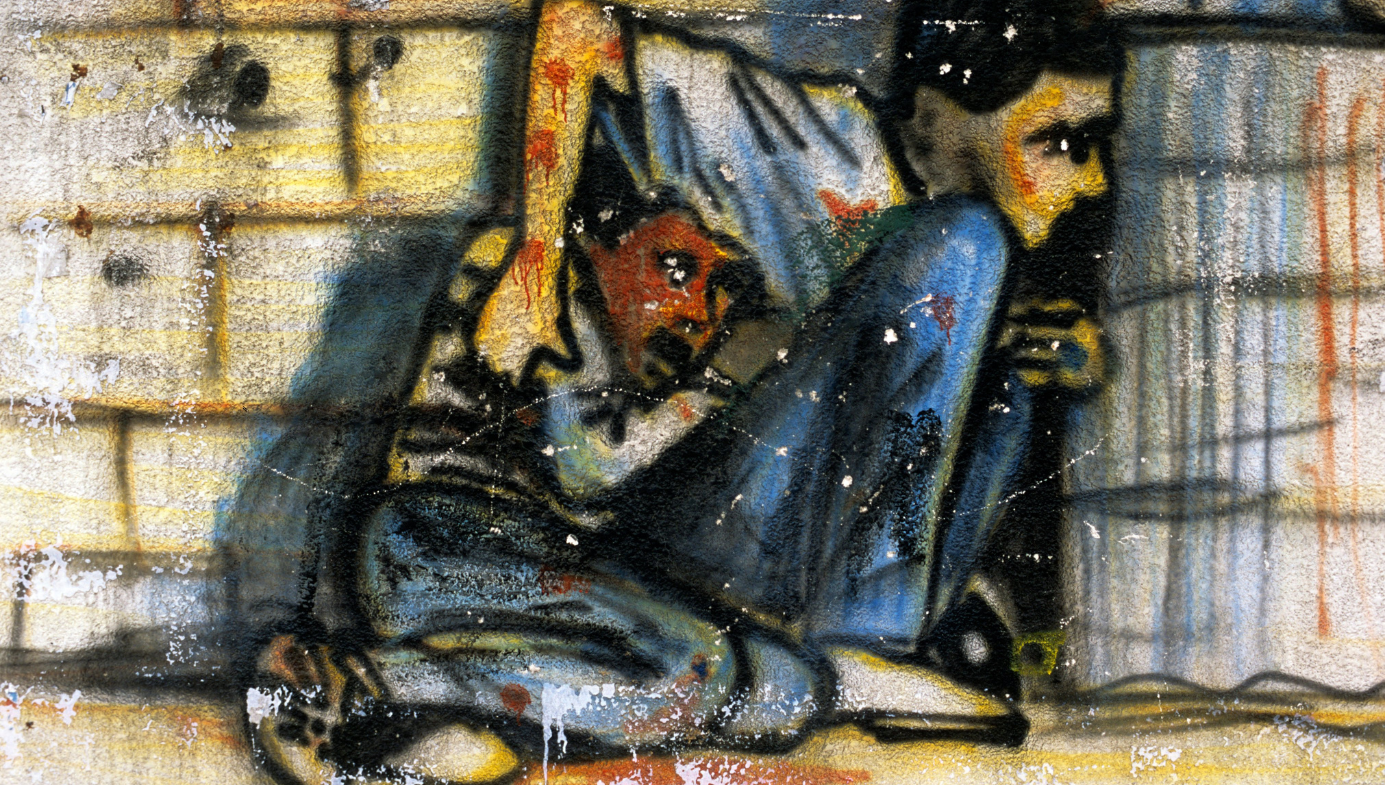The Ideology of Mass Murder
Hamas and the origins of the October 7th attacks.

The terrorist invasion of Israel by Hamas on October 7th, 2023, is the worst instance of mass murder of Jewish civilians since the Holocaust. Its barbarity may be shocking to many observers, but it will not have surprised those familiar with the ideology of the perpetrators. This latest outburst of violence is the logical outcome of the Jew-hatred that Hamas has openly expressed since 1988, and it rests on a strand of Islamic antisemitism that emerged in the early 20th century and fueled the Arab war of rejection in 1948. The ideology that inflames the Hamas leadership was the product of the fateful fusion of Nazism and Islamism in the 1930s and 1940s, and it has always rejected the legitimacy of a Jewish state (or indeed any polity that isn’t explicitly Islamist) anywhere in what, before 1948, had been British Mandate Palestine.
Hamas’s decision to launch this extensive attack calls to mind the efforts of previous terrorist actors who sought, sometimes with success, to sabotage diplomatic efforts that could lead to negotiated settlements of longstanding conflict. Yet the cruelty of this latest operation—murdering young people at a music event, executing whole families in their homes, seizing hostages—demonstrates that Jew-hatred has deranged the minds of the killers. Short-term political calculations may be helpful in explaining the timing of individual attacks, but the history of Islamist antisemitism is critical to understanding the genocidal racism that supports Hamas’s longterm eliminationist goals.

It is the intellectual and cultural historian’s task to recall the ideological passions driving Islamist behavior. Recollection is not difficult. Hamas considers its Jew-hatred to be a virtue and has repeatedly unified ideology and policy in the wars it has launched against Israel. Over several decades, the Middle East Media Research Institute (MEMRI) has collected a vast archive of texts, television programs, radio broadcasts, and social-media content that provides copious evidence of Hamas’s Jew-hatred. Likewise, the Middle East Forum run by Daniel Pipes has examined Hamas over many years. Though these resources are readily available to anyone with an internet connection, there has been widespread reluctance, particularly in liberal and progressive media circles, to pay attention to what Hamas officials actually say.
Ismail Haniyeh and other Hamas leaders watch Al-Jazeera coverage of Hamas's invasion of Southern Israel and perform a “prostration of gratitude” (MEMRI)
Hamas was established in late 1987 as the Palestinian wing of the Muslim Brotherhood. The organization’s 1988 Covenant, an English translation of which has been available on the website of the Avalon Project at Yale Law School for several decades, remains the clearest expression of the group’s foundational beliefs. In August 2014, I published an essay in the American Interest, in which I wrote:
Hamas, like all varieties of Islamist politics, dispensed with the PLO’s dubious assertion that anti-Zionism was not identical to hatred of the Jews as Jews. On the contrary, the writers declare, “our struggle against the Jews is very great and very serious”—the ultimate goal, not merely a tactic. To Hamas, this cause is both great and serious because it is explicitly religious. The Covenant is a Manichean document; it divides politics into true or false, just or unjust, alternatives. It promises to remake the world in the name of Islam, which, it regrets, has been wrongly driven from public life. This is its slogan: “Allah is its target, the Prophet is its model, and the Koran is its constitution: Jihad is the path and death for the sake of Allah is the loftiest of its wishes.”
The Covenant is indispensable to anyone seeking to understand the antisemitism of the group’s aims and conspiratorial paranoia. Article 22 states in part:
For a long time, the enemies have been planning, skillfully and with precision, for the achievement of what they have attained. They took into consideration the causes affecting the current of events. They strived to amass great and substantive material wealth which they devoted to the realisation of their dream. With their money, they took control of the world media, news agencies, the press, publishing houses, broadcasting stations, and others. With their money they stirred revolutions in various parts of the world with the purpose of achieving their interests and reaping the fruit therein. They were behind the French Revolution, the Communist revolution and most of the revolutions we heard and hear about, here and there. With their money they formed secret societies, such as Freemasons, Rotary Clubs, the Lions and others in different parts of the world for the purpose of sabotaging societies and achieving Zionist interests. With their money they were able to control imperialistic countries and instigate them to colonize many countries in order to enable them to exploit their resources and spread corruption there.
You may speak as much as you want about regional and world wars. They were behind World War I, when they were able to destroy the Islamic Caliphate, making financial gains and controlling resources. They obtained the Balfour Declaration, formed the League of Nations through which they could rule the world. They were behind World War II, through which they made huge financial gains by trading in armaments, and paved the way for the establishment of their state. It was they who instigated the replacement of the League of Nations with the United Nations and the Security Council to enable them to rule the world through them. There is no war going on anywhere, without having their finger in it.
Before and during the Second World War, the Palestinian Arabs were led by Nazi collaborator Haj Amin al-Husseini (also known as the Mufti), who met with Hitler in December 1942, worked with German intelligence, and helped to establish the Muslim division of the SS in Yugoslavia.

The Arabs, al-Husseini assured German foreign minister Joachim von Ribbentrop, were the “natural friends of Germany because both are engaged in the struggle against their three common enemies: the English, the Jews, and Bolshevism.” The war, he believed, had “been unleashed by World Jewry,” who controlled the United States and the Soviet Union.

More from the author.
My 2009 book Nazi Propaganda for the Arab World examined the Nazi-Islamist alliance between 1941 and 1945. In his 2007 book Jihad and Jew-Hatred: Nazism, Islamism and the Roots of 9/11, and in his new work Nazis, Islamic Antisemitism and the Middle East: The 1948 Arab War against Israel and the Aftershocks of World War II, the German historian and political scientist Matthias Küntzel has explored the history of Islamic antisemitism before and during the Holocaust, and its bloody legacy in the Middle East. I summarized this scholarship in a lengthy essay for Tablet magazine in July 2022:
In the past 30 years, historical scholarship has confirmed what American liberals and leftists, French socialists, communists, and Gaullists, and communists in the Soviet Union, Poland, and Czechoslovakia understood at the time. The realities of Palestinian nationalist collaboration with the Nazis were a matter of public knowledge and opprobrium around the world in the immediate postwar years, when American liberals in Congress, such as Sen. Robert F. Wagner and Congressman Emanuel Celler, the editors of The Nation magazine, the leftist dailies PM and the New York Post, and leaders of the American Zionist Emergency Council, as well as Simon Wiesenthal in Vienna, published documents from German government files offering compelling evidence of Amin el-Husseini’s enthusiasm for the Nazis and his visceral hatred of Judaism, Jews, and the Zionist project. These leaders and publications urged Britain, France, and the United States to indict “the Mufti” for war crimes, but the three governments, with Arab sensibilities in mind, refused to hold a trial that might have ended his political career.
Al-Husseini escaped house arrest in France in June 1946 and was given a hero’s welcome in Cairo by Muslim Brotherhood founder Hasan al-Banna, who enthused:
Hitler’s and Mussolini’s defeat did not frighten you. Your hair did not turn grey of fright, and you are still full of life and fight. What a hero, what a miracle of a man. We wish to know what the Arab youth, Cabinet Ministers, rich men, and princes of Palestine, Syria, Iraq, Tunis, Morocco, and Tripoli are going to do to be worthy of this hero. Yes, this hero who challenged an empire and fought Zionism, with the help of Hitler and Germany. Germany and Hitler are gone, but Amin Al-Husseini will continue the struggle.
Al-Husseini became leader of the Arab Higher Committee in Palestine, rejected the UN partition plan for Mandate Palestine, and set about Islamizing the nationalist movement.
Forty years later, Hamas revived the Islamically grounded Jew-hartred of al-Banna and al-Husseini. From the Muslim Brotherhood in Egypt and Gaza to the Islamic Republic of Iran, Islamists argued that the secular nationalists and leftists in the PLO and the Arab states had failed to destroy Israel in the wars of 1967 and 1973. Worse, from their point of view, the Camp David Accords of 1978 offered a slim hope of a compromise solution. They asserted that it was religious fundamentalism that provided the foundation for rejection of any compromise with Israel because it made sure that the secular conflict over land and borders became a war of religion as well, and thus precluded any negotiated settlement.
Meir Litvak, chair of the Department of Middle Eastern and African Studies at Tel Aviv University, has published extensively in scholarly journals on the Islamization of the Arab-Israeli conflict, with careful attention to the Arabic and Farsi language sources. In his recent article on “The Antisemitism of Hamas” in the Palestine-Israel Journal, Litvak writes:
Hamas emphasizes the “Islamic essence” of the Palestinian cause. As such, the struggle is portrayed as an unbridgeable dichotomy between two absolutes: a “war of religion and faith,” between Islam and Judaism and between Muslims and Jews, rather than one between Palestinians and Israelis or Zionists. It is a historical, religious, cultural, and existential conflict between the true religion, which supersedes all previous religions, i.e., Islam, and the abrogated superseded religion, Judaism.
Litvak, like Küntzel, interprets the ideology and actions of Hamas as a war of religion, and therefore an absolutist remnant of pre-modern politics fully at odds with the compromises of political and cultural modernity. In a similar vein, Paul Berman’s important books Terror and Liberalism (2003) and Flight of the Intellectuals (2010) drew attention to the totalitarian ideology that fueled the attacks of 9/11 and the Second Intifada. Much of this body of scholarship and intellectual commentary lies firmly in the liberal tradition, but it has often been ignored by those reluctant to probe too closely into the nature of Islamist doctrines and politics. Instead, liberal and progressive outlets have attempted to explain Palestinian terror as an instrument of postcolonial thought and anti-imperialist resistance, thereby transforming an ideology of the reactionary far-Right into an ideology of the revolutionary Left.
Distortions like these constitute an egregious failure of interpretation that is disfiguring the wider public’s understanding of the Middle East. The mass murder of October 7th was the most recent chapter in the Islamists’ long war against the Jews, Israel, and the values and institutions of Western democracy. It is important that intellectuals, analysts, journalists, politicians, policy experts, and government officials speak the truth about the connection between Hamas’s antisemitic ideology and its practice of indiscriminate bloodshed. Only by squarely facing what the leaders, clerics, and cadres of Hamas have said for years, can we begin to understand why its operatives perpetrated this most recent and most murderous of its assaults on Israel and its citizens.












